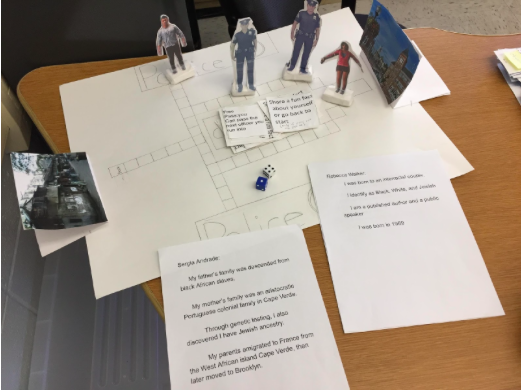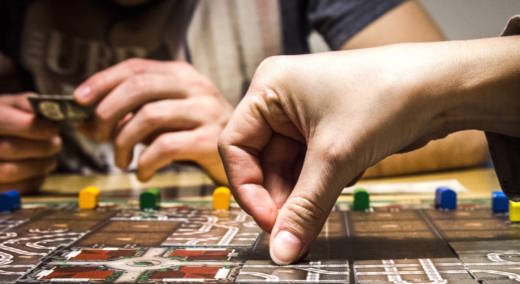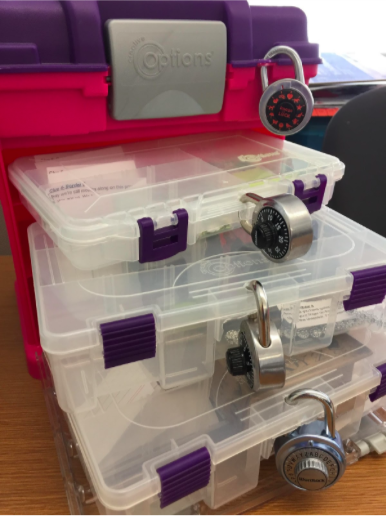“My parents emigrated to France from the West African island of Cape Verde, then later moved to Brooklyn,” one student said. Then she rolled a set of dice, and moved her game piece — an image of a woman wearing a red jacket — forward three spaces. Her goal was to get across the board, to the affluent neighborhood.
The player to her right went next. He rolled a four, and moved his piece — a uniformed police officer — closer to the first player. Now it was the third player’s turn. She rolled a six. Like the first player, she was instructed to read from a Fact Card. She read aloud, “I identify as black, white and Jewish.”
These students were playing a board game called Immigrants and Border Patrol. It was not created not by me, nor did professional game designers prototype it. The game was the result of a research project students conducted on issues facing illegal and undocumented immigrants. The designers were two 12-years-old students in my social studies class.
While the information on the Fact Cards was based on real people, they were not actually undocumented immigrants — they arrived here legally, or were the children of immigrants. Nonetheless, the facts were adapted to be backstories, adding a layer of humanity to their game. The curriculum materials came from the Brooklyn Historical Society, and were originally part of a Moveable Game Jam I helped organize with Games for Change.
 [/media-credit]
[/media-credit]Immigrants and Border Patrol is actually unwinnable. It is more of a procedural than a game, and that’s the point. The ongoing cycle of immigration and border patrol enforcement is embodied by the game’s core mechanics, or actions of play. The border agents patrol the board in a circular path, while the illegal immigrants try to move from one end of the board to the other. If the immigrants run into the border patrol, they don’t lose the game; instead, they go back to the start position and attempt the journey. At the end of playtesting, several students remarked, “There has to be a better system than this!”
Games, VR and Empathy
There is a growing list of serious games — themed on real-world issues and with strong narrative components — that can engage students in shared experiences and help create a sense of empathy. They also include time for reflection and discussion as the choices players make should resonate in an emotional response. One example I’ve introduced to my students is Mission US: City of Immigrants, which puts players in the role of a Russian-Jewish immigrant in New York City in 1907. Another is The Migrant Trail, which put students in the role of border patrol and undocumented immigrants. Both games can be read as a text, and can inspire thoughtful classroom discussions.

 [/media-credit]
[/media-credit]